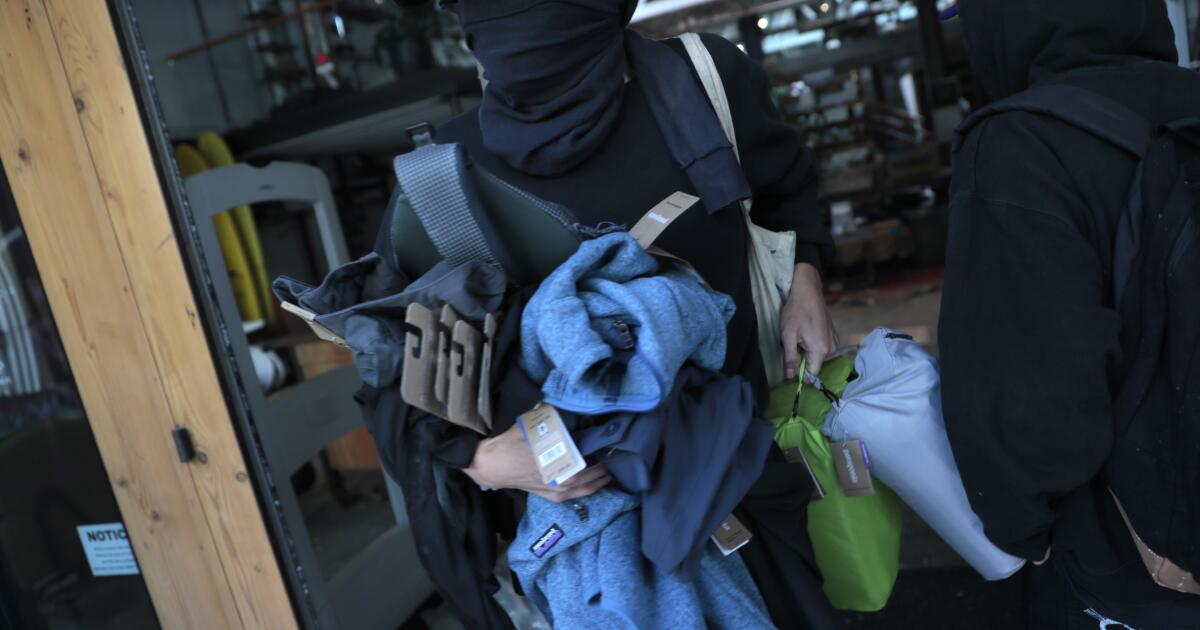The young man flanked the shattered entry of a ransacked CVS in Santa Monica, where people had swept the shelves clean of everything from diapers to detergent. The man, who did not cover his face, admitted he was a looter. He did not apologize.
“We’ve got no other way of showing people how angry we are,” he said.
Out of the store ran another young man, this one holding a carton of eggs. He grabbed a friend and started scanning the street for targets: police cars. “We’re doing it because we can,” he said.
Over in Van Nuys, a teenage boy standing outside a ravaged Skechers store held up a backpack. That was all he took. But it was enough, he said.
“We are just trying to provide and take up the opportunity that we are getting right now. That’s all.”
In the unprecedented reaction to the death of George Floyd at the hands of Minneapolis police officers, peaceful protest marches across Southern California in the last week have already dramatically changed the debate about police brutality and race relations.
But the massive demonstrations have been accompanied by looting in some cities around the Southland. Authorities believe most of the thefts and vandalism came from people not directly connected to the protests who used the teeming crowds as cover to steal merchandise.
Some of the looting appears to be organized, with groups driving around hitting multiple stores. For others, it was an outgrowth over the deep anger and frustration about the way blacks and others are mistreated, and they cited a host of other issues: President Trump, the privilege exposed in the college admissions scandal, and widening inequality.
“If Donald Trump is saying shoot us tonight, that is not giving us no leeway,” said a teenager holding the stolen Skechers backpack Monday in Van Nuys. “That’s just making things worse. If that’s giving permission for the police to shoot children, innocent teenagers, things like that, that’s not right.”
Times reporters interviewed people of different races and backgrounds who stole from stores over the last few days. The looters, unwilling to risk prosecution, declined to provide their names.
Hundreds of stores were hit over a three-day period, in many cases broadcast on live television. The stealing was largely limited to a few business districts including Fairfax, Santa Monica’s shopping district, parts of Long Beach, downtown Los Angeles, Van Nuys and Hollywood. Merchants — already reeling from coronavirus closures — were left with battered stores and even more losses. They and others expressed alarm at how the stealing was able to go on so long before police arrived.
Some have argued that too much attention is paid to the looting, which they say distracts from the powerful political movement fueled by Floyd’s killing. Yet the images had a larger symbolism.
“Part of it is simply an assertion of power. Riots nearly always have a carnival aspect because people who for nearly all their lives have felt under the thumb of other groups suddenly have a sense of power,” said Stephen Reicher, who studies crowd psychology at the University of St. Andrews in Scotland.
“People who have been invisible and whose situation has been ignored all their lives suddenly become visible.”


